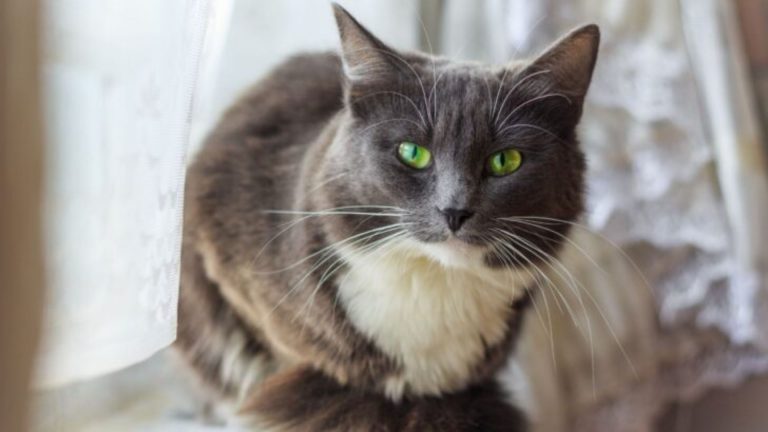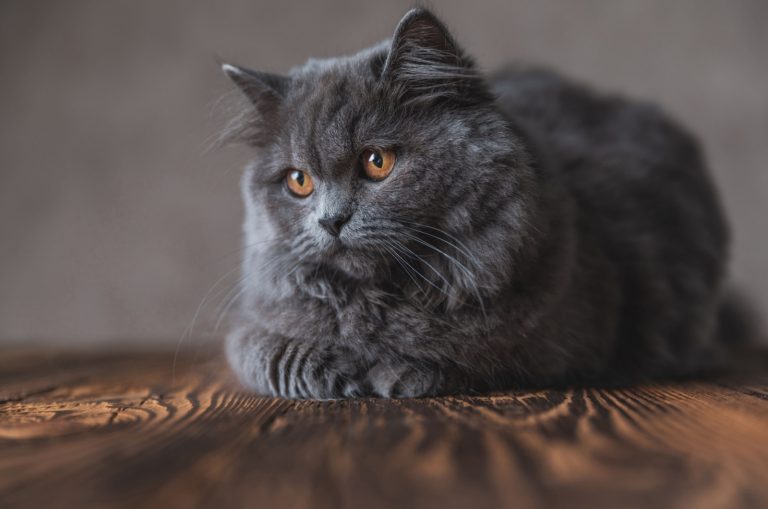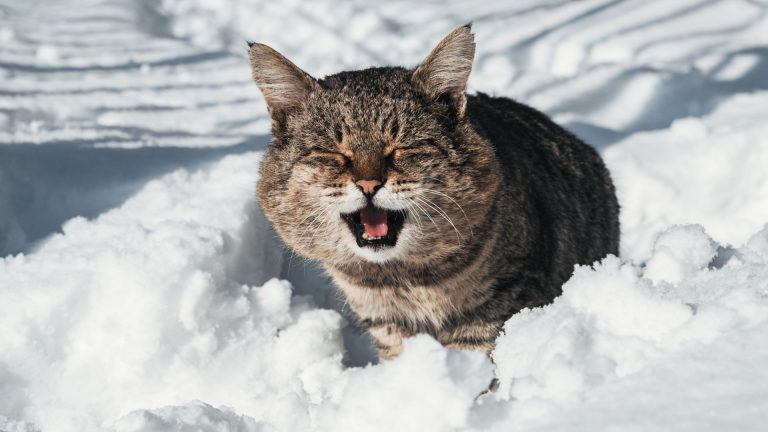These 10 Adorable Cat Breeds Have Such A Unique Coat That Will Make You Want One
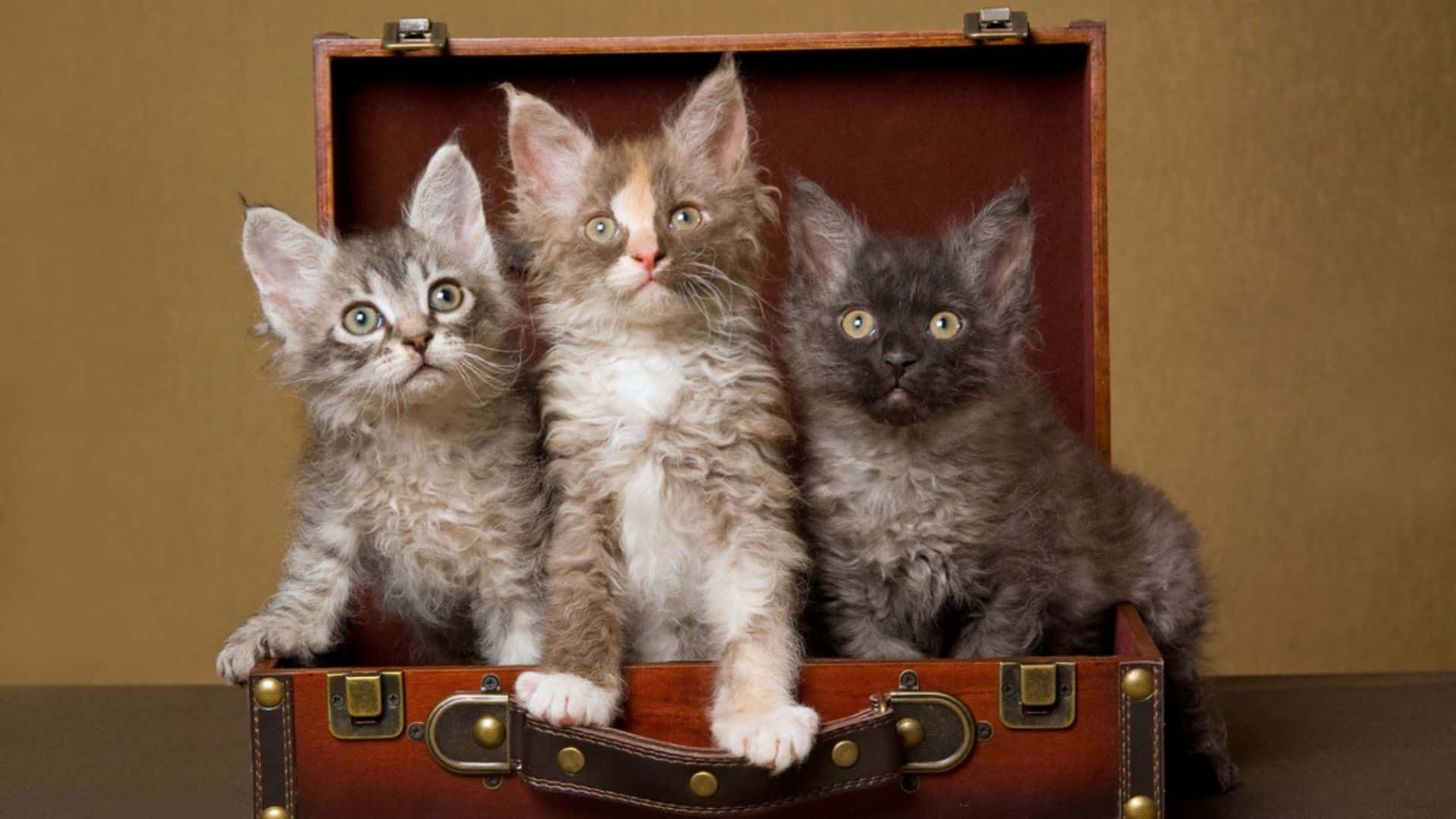
Cats are, generally, adorable creatures. Just when you think they can’t be cuter, you hear about curly-haired cats. What? Cats that resemble teddy bears, plush toys, and little lambs. Simply adorable!
Besides their unique appearance, some of these curly-hair cat breeds are known for their large ears, some for their feral cat parents. What’s more interesting is how they get this coat type.
Let’s learn which cat breeds can have a curly coat, how they get it, and how they originated.
10 Adorable Curly-Hair Cat Breeds
Surprisingly, there are actually only four curly-hair cat breeds that are recognized and accepted by cat registries: the Devon Rex, Selkirk Rex, LaPerm cat, and Cornish Rex.
However, in addition to these four, there are six other curly-haired breeds that haven’t been officially recognized yet. Read on to learn more about them!
1. Devon Rex
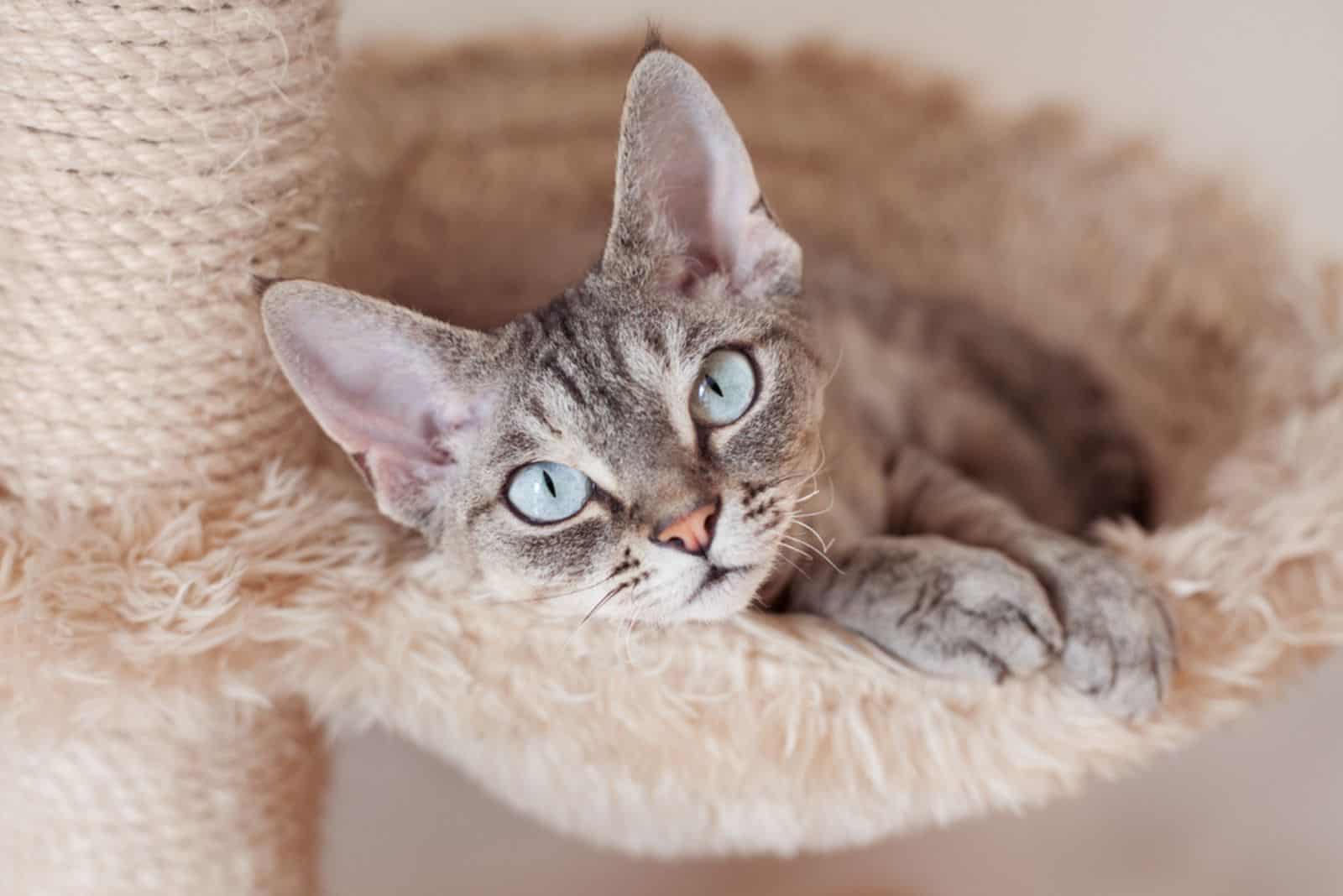
The origins of this unusual breed can be traced back to the 1950s, when a wavy-coated kitten was born in Devon, England. Beryl Cox, who also owned the stray cat mother, was the kitten’s owner.
This extraordinary breed’s father was a local stray cat with a curly coat. Kirlee was Cox’s kitten name. Cox approached the conservation program for the preservation of the Devon Rex’s coat.
During this process, it was discovered that Kirlee possessed a unique wavy-haired gene different to that of the Cornish rex — which led to the discovery of the Devon rex.
After this, breeders began working to preserve the Devon rex, and the breed was introduced to the US in the late 1960s.
The coat of a Devon Rex is especially wavy and comes in a wide range of patterns and colors. However, their distinct personality traits overshadow the Devon Rex’s appearance. These cats are known for being extremely playful, loving, sociable, and active.
2. Ural Rex
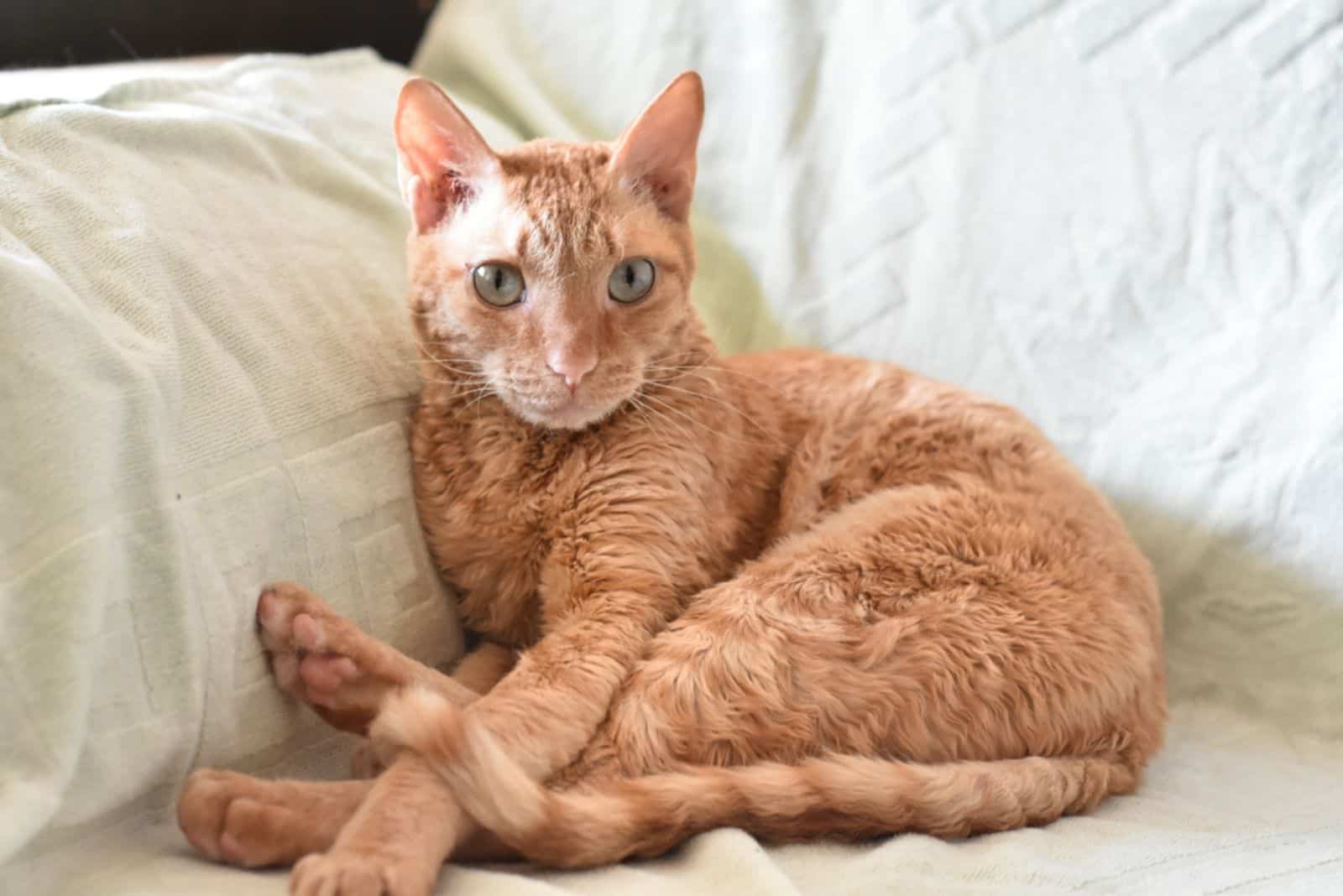
The foundation cat was “Vasilij,” a curly bi-colored cat born in 1988 in Russia. He was bred to his mother, to help strengthen and continue the curly-haired feature.
The breeders continued inbreeding for another generation, and there have been no anomalies discovered in their program. The gene pool was expanded by outcrossing to the European Shorthair.
This is a relatively new breed that was accepted by the World Cat Federation (based in Germany) in 2006. It is distinguished by its soft, silky, lightly curled coat.
Even though the Ural Rex may seem similar to other Rex breeds, researchers confirm that it possesses a unique genetic variant not found in other curly-haired breeds. The Ural Rex’s large eyes and sweet personality have earned the breed many cat lover fans in its native Russia.
3. Skookum Cat
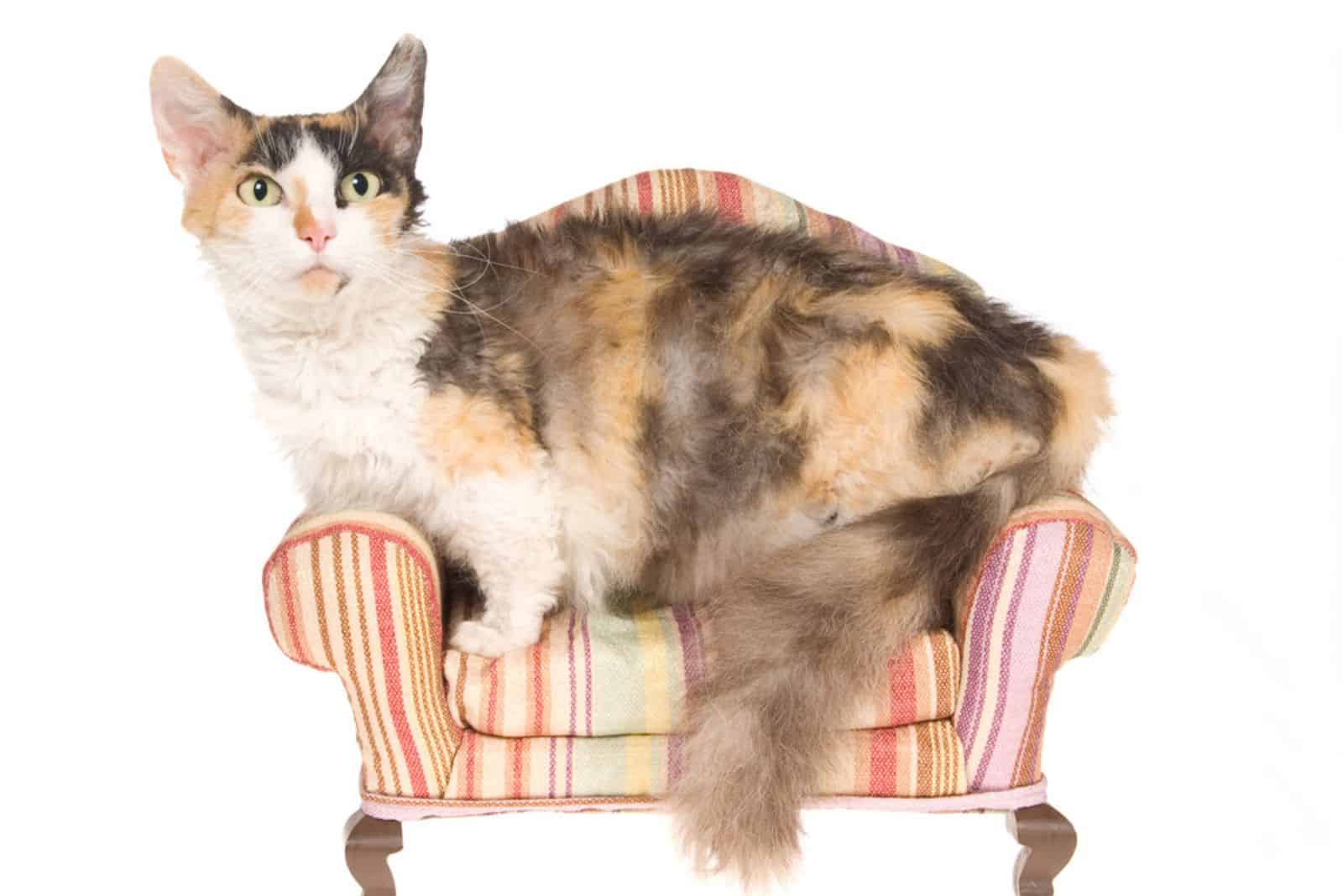
This is an experimental cat breed that was developed in the 1990s in the United States. Breeder Roy Galusha was the first to cross the Munchkin cat, a dwarf breed, with the LaPerm, a cat known for its intriguing curly coat and intelligence.
As a result of this new adorable cat breed with curly hair and short legs, more breeders stepped in to continue its development.
Despite being recognized by TICA, most cat registries and organizations still believe that breeding Munchkins is unethical due to purposeful genetic mutations, health and mobility concerns.
4. German Rex

Shortly after World War II ended, a stray female cat was rescued in East Berlin. Because the cat’s wavy black coat reminded the rescuer of a small black lamb, he named her Lammchen, which translates to Lambkin.
She was bred with one of her wavy-haired offspring in 1957, producing the first litter of German Rex kittens. Two German Rex females were brought to the US in 1960.
These females were soon joined by Columbus, a male German Rex cat. These three cats laid the groundwork for the breed’s spread across America.
The International Cat Federation has formally recognized the German Rex as a rare curly-haired cat breed. The German Rex is characterized by its wavy coat and short, curly whiskers, as well as its adorably oversized ears.
5. Selkirk Rex
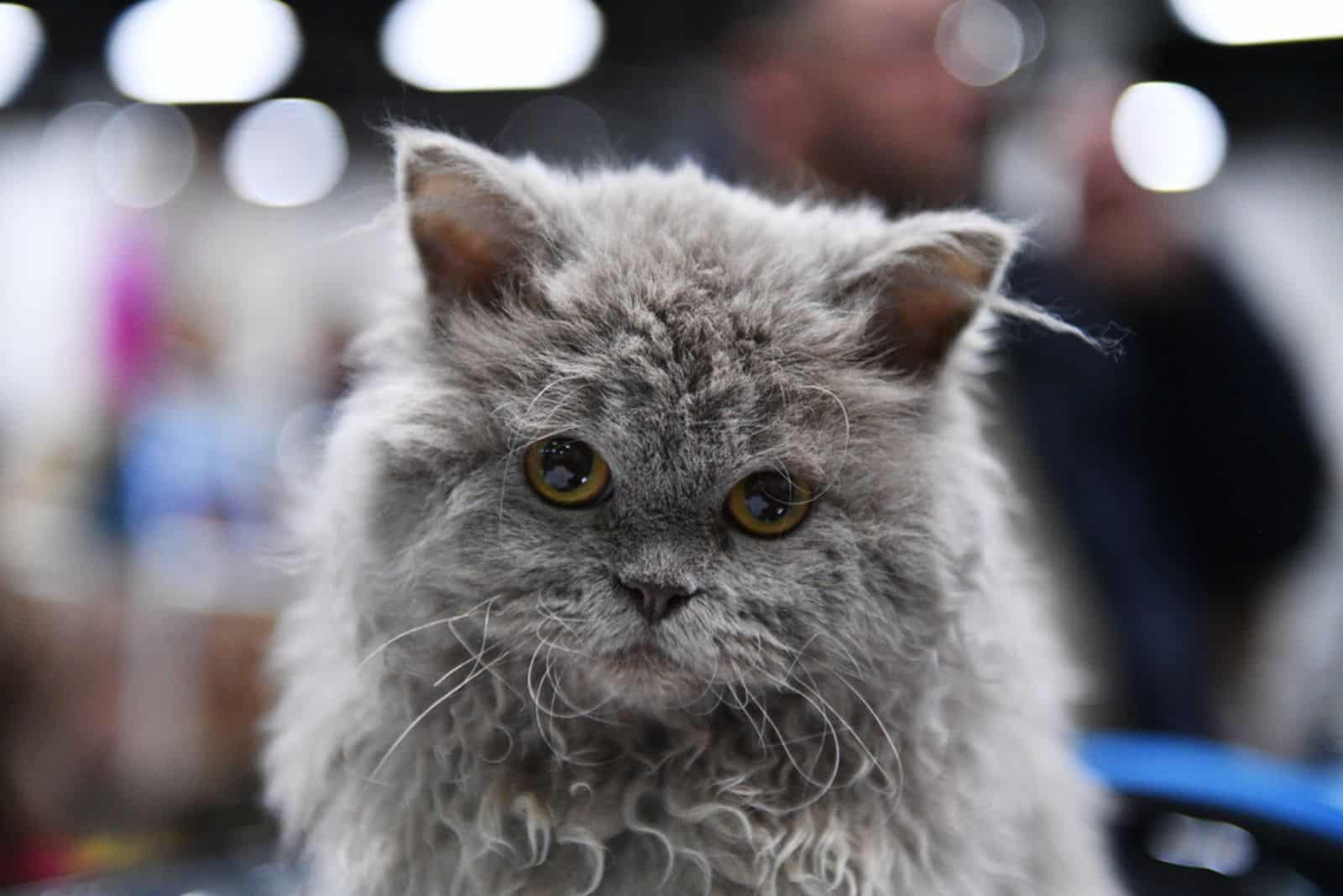
The origins of these fluffy cats can be traced back to 1987 and a feline named Miss DePesto. This gorgeous and distinctive kitty had three other brothers and sisters, none of whom had her distinguishing curly hair.
When Jeri Newman, a breeder, saw Miss DePesto, he decided to adopt her and begin breeding more curly-haired kittens. It was discovered that kittens from the same Selkirk Rex litter could have both curly and straight hair.
Their whiskers can be wavy or curly when their coat turns out curly. Their fur length and color vary as well. Most will have long hair, but you might stumble upon Selkirk Rex cats with shorter coats too. Selkirk Rex cats are ideal for families and kids.
Another important characteristic of these cats is that they are very patient and enjoy being around other people. So, if you frequently entertain guests and have socialized your cat from an early age, your Selkirk Rex will most probably love all the attention.
6. Cornish Rex

Another curly-haired cat breed with roots in England is the Cornish Rex. A kitten named Kallibunker, as a curly kitten, stood out from his farmhouse cat siblings.
He was bred to produce wavy-haired kittens, who were then crossed with Siamese, Burmese, and British domestic shorthair cats. The end result? A fascinating new breed with bat-like ears and extremely soft, curly fur.
Cornish Rex cats have long tails, slim bodies, and big ears. Their appearance is made even cuter by curly whiskers. Their fur is wavy and comes in a variety of patterns and colors. It’s incredibly soft, thick, and surprisingly warm.
Also, despite being a small to a medium-sized cat, it is quite heavy when lifted. Cornish Rex cats love the attention of their humans, they’re highly active and love to be in the center of attention.
You might also be interested in: Devon Rex Vs Cornish Rex: Can You Tell The Difference?
7. Tennessee Rex
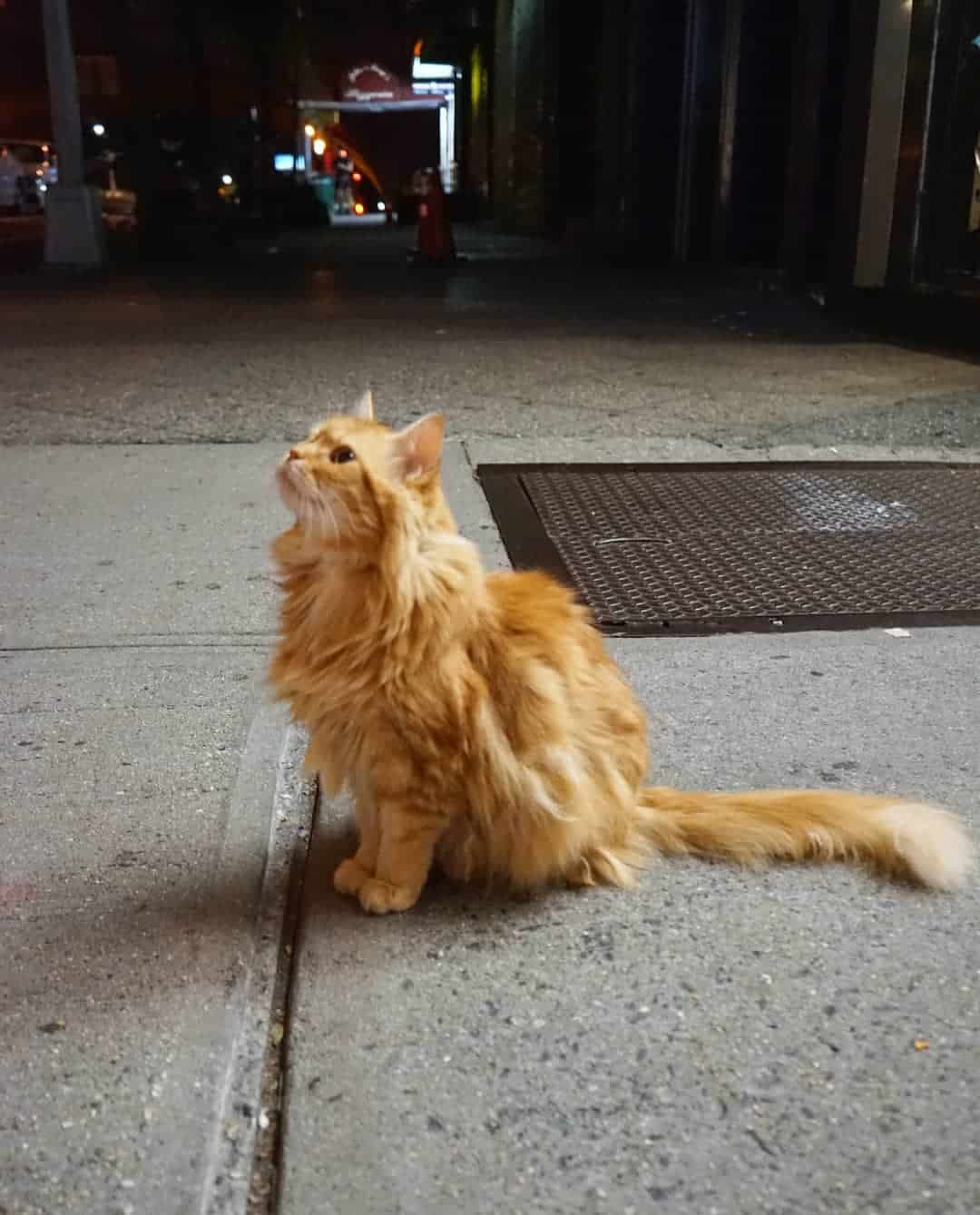
The Tennessee Rex cat breed, which originated in the Tennessee Valley in 2004, was recently recognized by The International Cat Association.
These big cats have curly coats from the moment they’re born, and their fur seems like it shimmers in the light. These curly cats are medium-sized, and their personality is endearing.
They form strong bonds with their owners and might end up following them wherever they go, but they’ll never be boring.
8. Oregon Rex

The Oregon Rex is the only domestic cat breed that is believed to be extinct. It is sadly possible that it is no longer present. It does, however, merit an honorable mention. These lovely cats first appeared in Oregon in 1955.
The majority of sources claim that this breed became extinct in 1972 as a result of breeding with Cornish Rex cats. Oregon Rex cats were strong-willed, but they adored their owners.
Because of their stubborn personalities, some owners said they were difficult to keep as indoor pets. Perhaps this is another reason why the breeding process was halted. The curly coat lacked guard hairs, was short, and had tight curls.
These lovely cats ranged in size from small to medium, with athletic bodies. Their heads were small and round, with big ears and huge eyes.
9. Tasman Manx
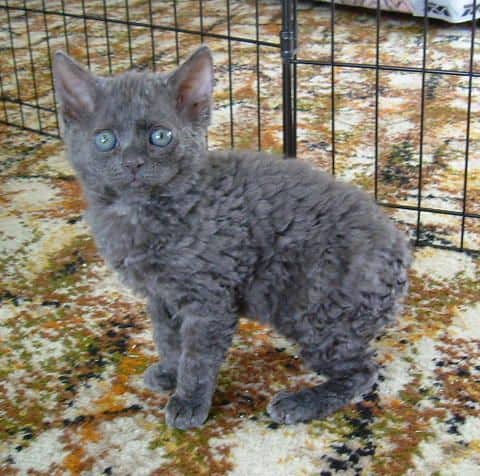
The Tasman Manx is distinguished by two unusual characteristics: a curly coat and the lack of a tail. The Tasman Manx, which is recognized by New Zealand Cat Fancy, is native to New Zealand and gets its name from the Tasman Sea.
The Tasman, like all Manx cats, is either tailless – a trait breeders refer to as “rumpy” – or nearly tailless, aka “stumpy.”
The Tasman has kinked whiskers as well as a soft, rippled coat. Their temperament is lighthearted, but they are not excessively vocal or boring.
Tasman Rex cats can be difficult to find because they are an extremely rare breed. But if you do succeed at adopting one, you should know that these cats are never demanding, and they’re great with kids and other pets.
10. LaPerm
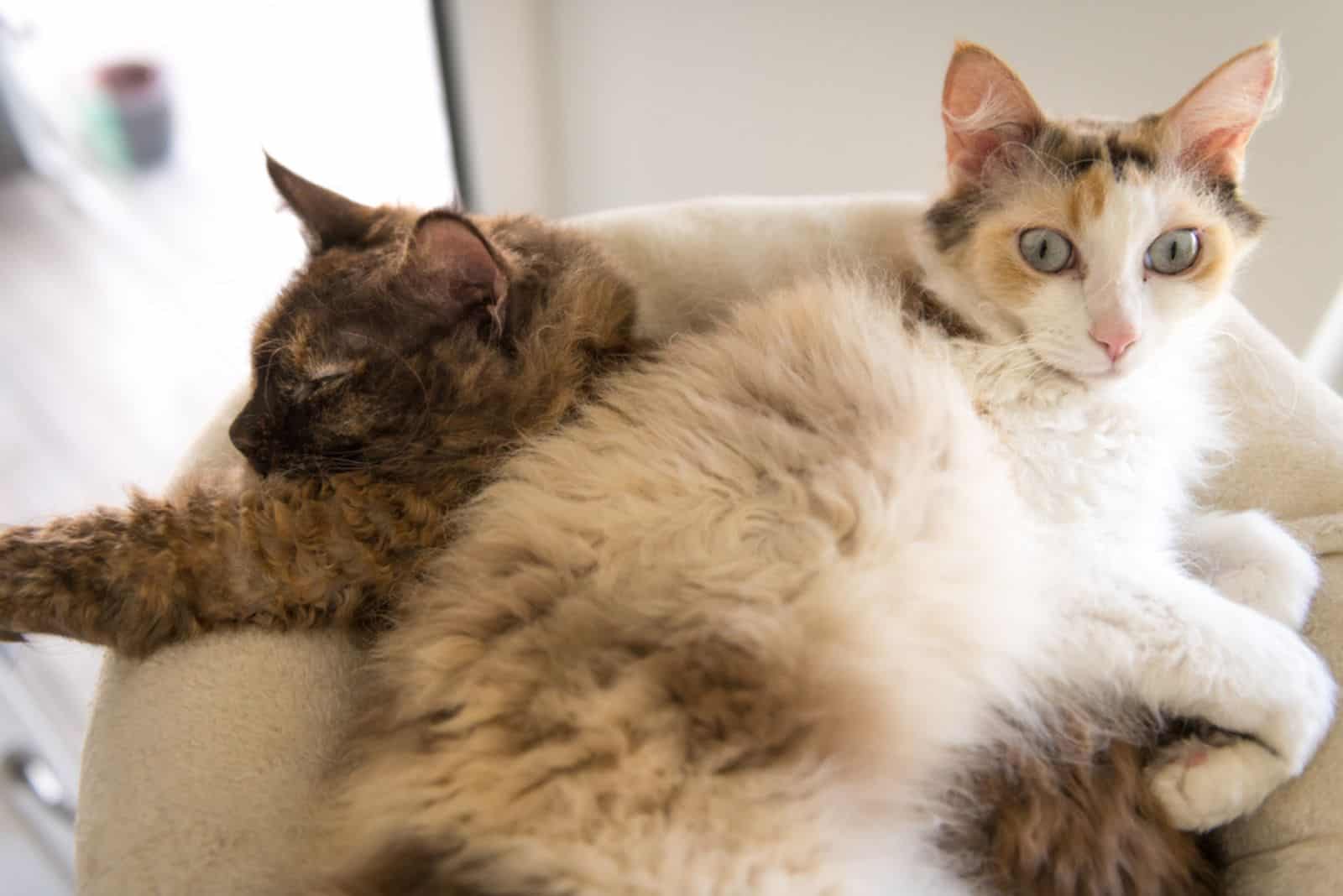
The owner of an Oregon farm, noticed that a large number of barn cats had wavy hair in the 1980s. She began selectively breeding them, resulting in the LaPerm, a striking new curly cat breed.
Curls on LaPerm cats can range from soft and wavy to tight curls. The tails of longhair LaPerms are full and curled, whereas shorthair LaPerms have a “bottlebrush” tail.
The density and curl patterns of a LaPerm’s coat can change over time, and many LaPerms have unique “parts” down their back fur. These cats are easily identified by their permed hairstyle, which many owners fall in love with right away.
Surprisingly, all LaPerm cats are born hairless or with short hair that falls out shortly after they’re born. LaPerm cats have perms in the true sense of the word, with luxurious wavy hair or loose curls.
These furry friends have a variety of coat colors and patterns, with the three most common being tortie, tabby, and red.
See also: 10 Short Legged Cat Breeds – Munchkin & The Feline Gang
Why Do Some Cats Have Curly Hair? (Vet Answer)
After a lot of research on curly-haired cat breeds, I’ve realized that the cat’s genetics is the ultimate answer. This is why I consulted my colleague Iram Sharma (DVM).
As Iram says, the rare curly-haired coats present in the cat breeds I’ve mentioned above are a result of an accidental genetic mutation, commonly referred to as “the rex mutation”.
Iram goes on to say that “when this mutation is present in the genetic make-up of a cat, the appearance and sole structure of a cat’s hair change, resulting in curly or wavy hairs.”
She adds that “curly hair cannot be caused by one mutation but by the occurrence of various mutations. This is why all these curly-hair cat breeds have different and unique curly coats.”
Grooming Tips For Curly-Haired Cat Breeds

Curly coats are not only different in appearance but in grooming requirements as well. All these breeds have undercoats, but the majority of their coats are made of fluff.
This necessitates specialized brushing and regular bathing. But don’t be repelled by this news, read on and learn helpful tips for grooming a curly-haired cat breed.
• Bathing
A curly cat’s coat cannot absorb the natural oils produced by its skin. This is why their hair tends to look greasy or oily sometimes. While you brush your curly kitty, you’ll be able to notice when it gets oily, which means it’s time for bathing.
Always look for cat-friendly shampoos, and in this case, bathe your curly cat with gentle nourishing shampoos that will preserve its wavy coat and keep it shiny.
The difficulty of bathing will vary depending on the cat, but most curly-haired kitties don’t complain about it. These affectionate cats form strong bonds with their owners, and bath time only means they’ll spend more quality time with you.
• Combing/Brushing
Combing and brushing are the two things all curly-haired cat owners must do on a regular basis. However, this does not mean that owning a cat with a curly coat is a lot more difficult than some other long-haired cat breeds.
All cat owners must brush their cats, so the brushing requirement is quite similar to that of any cat. The only difference is that some breeds require it more times a week than others. The breeds that are a bit more difficult to comb are Selkirk Rex and LaPerm.
Other than curly, their coats are dense and easily matt, and precisely the lack of brushing is what contributes to matted fur. With that, you should brush your Selkirk Rex or LaPerm cat at least two times a week, using brushes and combs designed for them.
Devon Rex and Cornish Rex, for example, have looser curls that don’t become matted as easily and, thus, don’t require as much brushing. The issue with them, however, is the opposite of matting; they develop bald spots.
This can lead to a variety of other issues. Bald spots are most frequently caused by your cat overgrooming itself. Because its hair follicles are fragile, it’s very easy for hair to fall out, especially in the case of overgrooming.
Which Areas Are The Trickiest To Groom?
The cat’s limbs, neck, and stomach area are the parts of your curly cat’s body that require the most attention. Their curls are the smallest and tightest there. It might be hard at first, but don’t leave any tangles once you begin.
Any tangles you leave will only become worse and make it harder for you to deal with the next time you comb or brush your cat. If you don’t brush your cat on a regular basis, it can result in matting, itching, allergies, and even bald spots.
If you notice your cat is overgrooming itself, you should stop it by redirecting its attention. You can also talk to a professional groomer or consult your vet if you notice your cat’s hair falling out or if there are any bald patches.
They will also provide you with additional instructions and info on how to care for your feline friend.
Read more helpful tips in Cats With Undercoats – Grooming And Care Tips
Closing Thoughts
Well, we’ve learned that there are four curly-hair cat breeds that are recognized and six more that have yet to be recognized by cat registries like the Cat Fanciers’ Association, TICA, and others.
To conclude, curly coats are a result of a spontaneous genetic mutation, and every curly-haired cat breed has a unique type of curly or wavy coat.
Besides their extraordinary and beautiful appearance, curly-haired cat breeds are affectionate, loyal, playful, and overall good as pets. Most of them form strong bonds with their humans and are great with families, kids, and other pets.
I hope you found the answers to your questions and that this brief article was fun to read.
Now that you know all about curly-haired cats, I suggest you learn about cats with curly whiskers! Check out: Cats With Curly Whiskers: Everything You Need To Know & More


